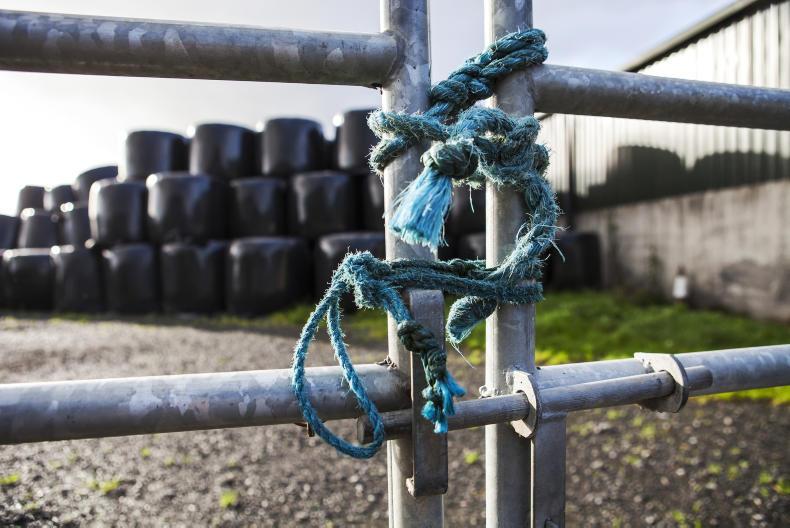Coastal counties along the south and west of Ireland were most affected by what was described as the worst weather to hit Ireland in over 50 years.
Munster
Storm Ophelia has left homes across Munster without power, but farmers say the worst of the storm seems to have passed.
Reports are coming in from Clare and Limerick of fallen trees, with multiple trees reported down on farms around Croom near the M20 in Limerick. But power supplies seem to have been maintained throughout the worst of the storm in both counties.
A number of trees are down around Kanturk in Cork, and farms in Kerry and Cork have been without power all day. But according to a farmer in Shrone, Co Kerry, “the big wind is gone”.
A selection of some of our strongest gusts today (km/h):
— Met Éireann (@MetEireann) October 16, 2017
Fastnet Lightnouse 191
Roches Point 156
Kinsale Platform 141#Ophelia
Farms and businesses in Cork had been preparing for flooding, but, as yet, none has been reported.
Met Éireann predicted that the storm would be the worst Ireland has seen since the 1960s. However, farmers seem to be staying resilient in the aftermath of Ophelia, with one farmer on the Dingle peninsula telling the Irish Farmers Journal that the wind “hadn’t been that bad” on Monday morning, with levels already dying down by evening time.
Edward Dudley, a farmer based outside Thurles in Tipperary, also confirmed that he’d had power throughout the day and had been able to milk his cows this morning without any issues.
He said he’d had some trees down on the farm, but planned to continue with second milking that evening and that collection was still due on Tuesday.
However, Tramore in Waterford experienced a number of storm surges and a woman tragically died in the county when a tree fell on the car she was driving.
Met Éireann has forecast that winds will continue to die down across Munster, but to expect heavy showers overnight.
Leinster
Munster appears to have been much worse off than Leinster. Much like the rest of the country, fallen trees and lost roof tiles were the most severe issues for farmers in the province.
Still gusting in the high 90's around our coasts this evening.
— Met Éireann (@MetEireann) October 16, 2017
Plus a graphic showing warnings across Europe today.https://t.co/LrbK9hF6FA pic.twitter.com/4GXtdb6txL
In Meath, winds started to pick up in Kells around 2pm in the day, with intermittent gusts becoming more commonplace as the afternoon progressed. High wind speeds became more sustained by 3pm, turning stormy until 5pm.
With very little rain in Meath and windy conditions, ground conditions improved somewhat and wind speeds didn’t appear to reach a level which would lead to a high level of structural damage.
While there are some trees down around Kells, the roads are mostly littered with branches and remain passable. Disruption to electricity supply in the area appears to be very localised.
In Kilkenny, IFA county chair John Bambrick said that it was “like Christmas Day” around him, with farmers and locals heeding the warnings to remain indoors.
“There wasn’t really huge damage that I’m aware of. I had one roller door damaged alright, but there was nothing too bad.”
Wicklow also appears to have avoided the worst of the damage, according to county chair Chris Hill.
“We had a few branches down, but there wasn’t a lot going astray,” he said.
Ulster
In Ulster, at the time of writing, Ophelia was heading away from the province and there was no major damage reported.
Again, fallen trees and some roof tiles were the main causes of concern.
Visible satellite images of Storm #Ophelia
— Met Éireann (@MetEireann) October 16, 2017
Data from 10am to 2:15pm pic.twitter.com/wSg0CBuM0V
Donegal IFA county chair Michael Chance said: “Winds were a bit high, but we seem to have escaped the worst of it. It seems to have just skimmed past us.”
Connacht
Like Leinster, high winds and loss of power were the main problems in Connacht.
There were many reports of fallen trees on farms, some of which ended up blocking roads. In south Galway, IFA county chair Pat Murphy said that part of the county appeared to “escape the worst of it”.
In Mayo and Sligo, again high winds were reported, but there was no major structural damage.
With most farmers reporting little damage on Monday night and power gone in parts of the country, more images and news of structural damage is expected on Tuesday.
Teagasc agricultural colleges to remain closed on Tuesday









SHARING OPTIONS